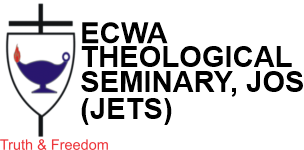A place for Hagar's son : Ishmael as a case study in the priestly tradition / John T. Noble.
By: Noble, John T. (John Travis) [author.].
Contributor(s): Noble, John T. (John Travis). Let Ishmael live before you!.
Material type: BookPublisher: Minneapolis : Fortress Press, 2016Description: x, 179 pages ; 24 cm.Content type: text Media type: unmediated Carrier type: volumeISBN: 1506402003; 9781506402000.Subject(s): Ishmael (Biblical figure) | Ishmael (Biblical figure) | Ismael | Bible. Genesis -- Criticism, interpretation, etc | Bible. Genesis | Priesterschrift | P document (Biblical criticism) | J document (Biblical criticism) | E document (Biblical criticism) | Election (Theology) | E document (Biblical criticism) | Election (Theology) | J document (Biblical criticism) | P document (Biblical criticism)Genre/Form: Criticism, interpretation, etc.DDC classification: 222/.11092
BookPublisher: Minneapolis : Fortress Press, 2016Description: x, 179 pages ; 24 cm.Content type: text Media type: unmediated Carrier type: volumeISBN: 1506402003; 9781506402000.Subject(s): Ishmael (Biblical figure) | Ishmael (Biblical figure) | Ismael | Bible. Genesis -- Criticism, interpretation, etc | Bible. Genesis | Priesterschrift | P document (Biblical criticism) | J document (Biblical criticism) | E document (Biblical criticism) | Election (Theology) | E document (Biblical criticism) | Election (Theology) | J document (Biblical criticism) | P document (Biblical criticism)Genre/Form: Criticism, interpretation, etc.DDC classification: 222/.11092 | Item type | Current location | Call number | Status | Date due | Barcode |
|---|---|---|---|---|---|
 Books
Books
|
Doctoral Library | PhD BS1235.52 .N63 2016 (Browse shelf) | Available | 1042494 |
Browsing Doctoral Library Shelves Close shelf browser
| PhD BS1192.5 .S45 2004 Word without end : | PhD BS1235.2 .W47 1980 The promises to the fathers : | PhD BS1235.52 .M38 2016 Belonging in Genesis : | PhD BS1235.52 .N63 2016 A place for Hagar's son : | PhD BS1245.5 .G65 1991 Jews and Christians, getting our stories straight : | PhD BS1255.53 .R33 2008 Leviticus / | PhD BS1295.52 .W66 2016 Women of war, women of woe : |
Originally presented as the author's thesis, doctoral dissertation, Harvard University, 2013 under the title "Let Ishmael Live Before You!"; Finding a Place for Hagar's Son in the Priestly Tradition.
Includes bibliographical references (pages 155-166) and indexes.
Introduction -- Patterns of exodus in the Hagar and Ishmael traditions of J and E -- Particularity and ambiguity in the priestly Abrahamic covenant -- Covenant and context in P -- Ishmael, Ishmaelites, and biblical narrative -- Conclusion.
The profound ambivalence of the biblical portrayals of Hagar and Ishmael--dispossessed, yet protected; abandoned, yet given promises that rival those of the covenant with Abraham--belies easy characterizations of the Pentateuch's writers. In particular, John T. Noble argues, conventional characterizations of the Priestly writers' view of covenant have failed to take into account the significance of these two "non-chosen" figures. Noble carefully examines their roles and depictions in the P and non-P Genesis traditions, comparing them to other "non-chosen" figures and to patterns found in Exodus traditions and the patriarchal promises to Abraham, showing that Ishmael is clearly favored, though not chosen. Indeed, Noble argues, Ishmael must be seen as a key figure in the Priestly material, highlighting the relationship between Noahic and Abrahamic covenants. His ambiguous status calls for reconsideration of the goals and values of the Priestly work, which Noble sketches around themes of covenant, fertility, life, and the future of nations. (Publisher).

There are no comments for this item.